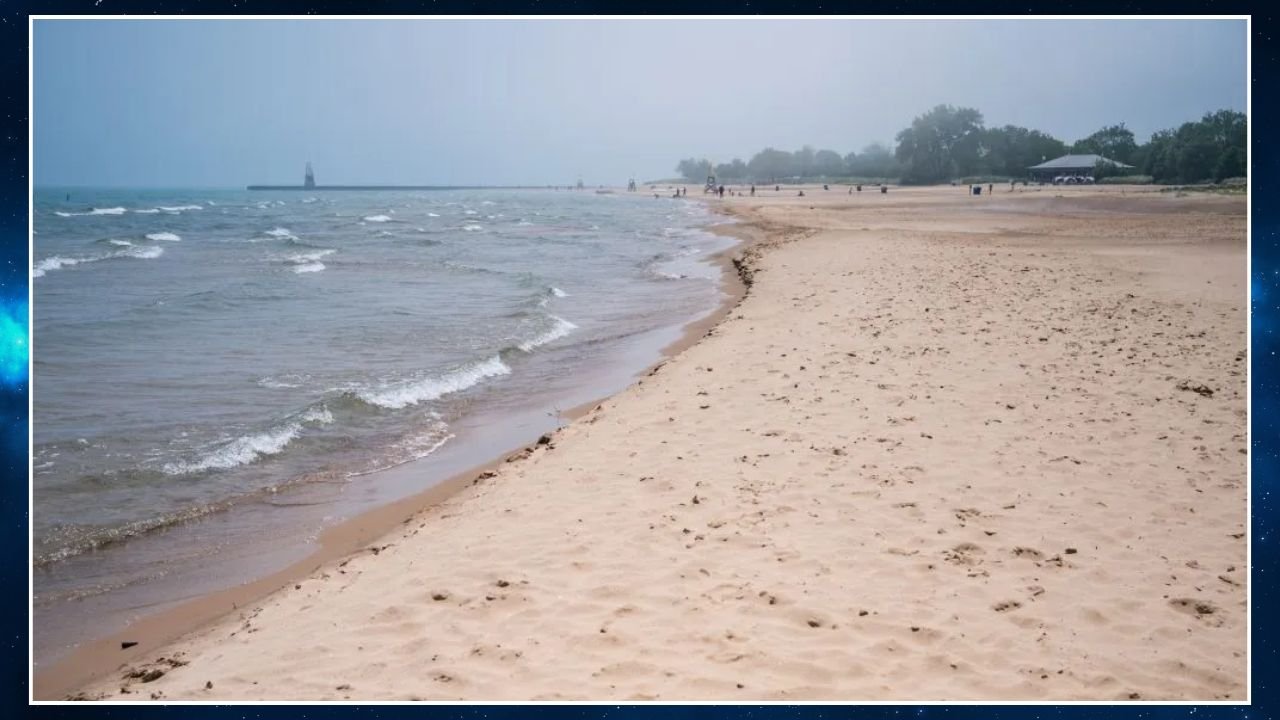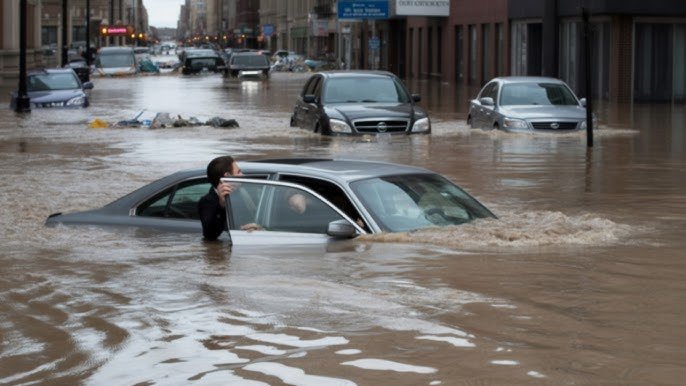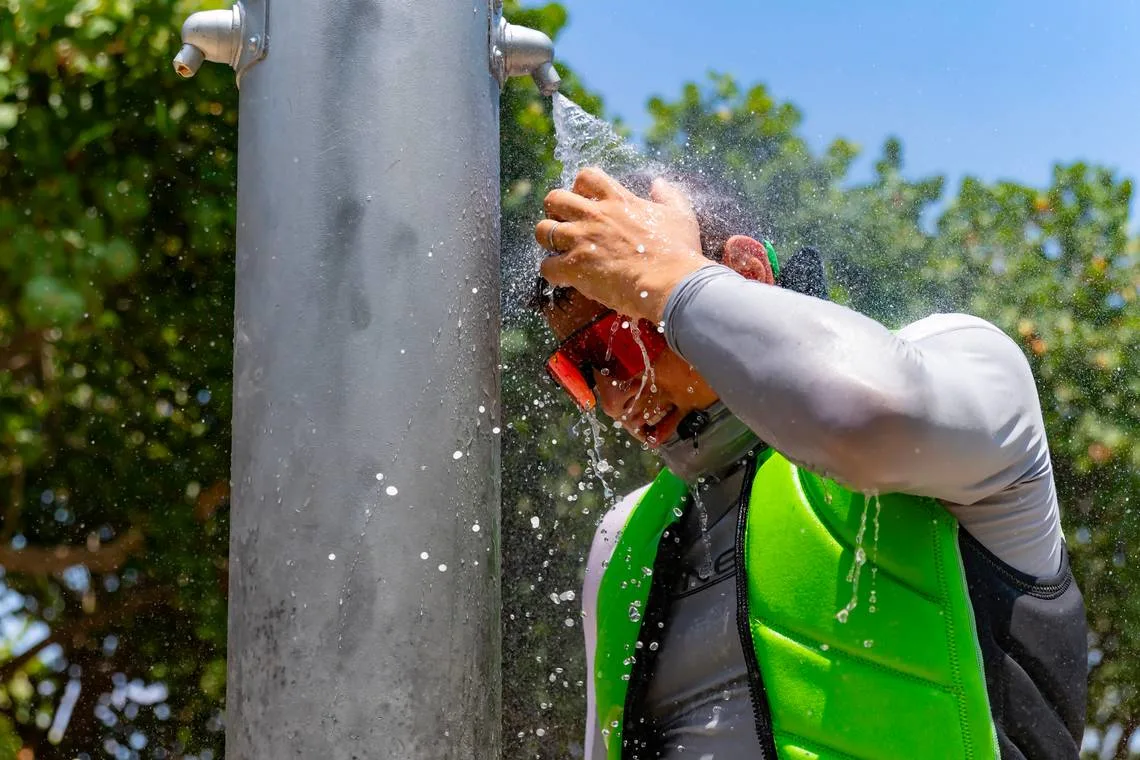CHICAGO — Lake Michigan has dropped nearly four feet since reaching record highs in 2020, transforming sections of Chicago’s shoreline, connecting once-separated beaches, and exposing new land — along with environmental concerns.
According to data from the U.S. Army Corps of Engineers, Lake Michigan has declined 3.5 feet between May 2020 and May 2025, reversing nearly a decade of rising levels that had previously threatened roads, homes, and public spaces along the city’s lakefront.
Connected Beaches and New Landscapes
The changing shoreline is especially visible in Edgewater, where falling water levels have created a wide sandy stretch between Lane Beach and Osterman Beach. This newly connected beach route has become popular with walkers — but it’s also creating unintended consequences.
“Now we’ve got this gorgeous, expansive beach that we don’t always get to take advantage of,” said Karen Gebhart, a local resident and regular paddleboarder.
However, the expansion has compromised the natural buffer once provided by the lake. A protected dune area north of Osterman Beach is now more accessible to beachgoers, raising concerns among environmental advocates.
“I have no issue with people walking between the beaches; I just want to protect the preserve,” said Kelsey Rae Miles, a volunteer with the Edgewater Environmental Coalition.
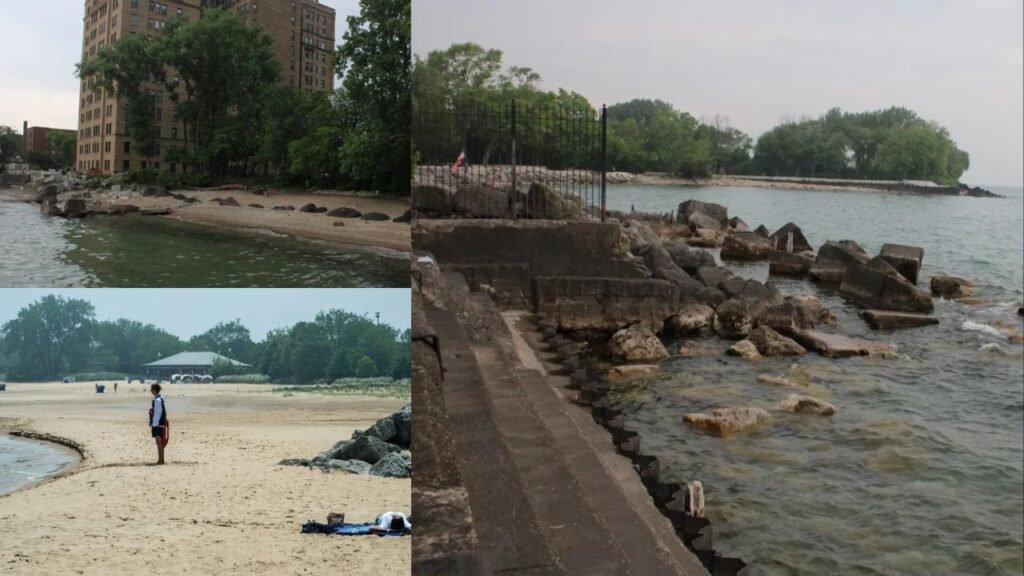
South Shore Relief — But Still No Long-Term Fix
On the South Side, lower lake levels are offering relief to residents in South Shore, where high water in 2020 had flooded streets and threatened homes between 67th and 73rd streets.
Juliet Dervin, a founding member of the South Side Lakefront Erosion Task Force, said the community is grateful for the reprieve but warns the lake is unpredictable.
“We’re really grateful, but the fact is, the lake goes up and down,” Dervin said. “We’re hoping work can begin while the lake is low because it’ll be easier to construct shoreline protection.”
Residents have long sought breakwaters and other shoreline stabilization to mitigate future flooding, but it’s unclear whether those plans are moving forward. State Rep. Curtis Tarver, a key advocate for funding such projects, did not respond to interview requests.
Rogers Park Beaches Still Off Limits
Even with the lake receding, erosion damage from previous years persists. Juneway, Rogers, and Howard beaches in Rogers Park remain closed due to previous shoreline destruction, and past restoration efforts like rock walls and concrete barriers are still visible above the waterline.
Photographs comparing 2020 to now show just how drastically the shoreline has receded.
Environmental Trade-Offs and Park District Response
The Chicago Park District initially installed fencing and posted lifeguards between Lane and Osterman beaches to prevent damage to the Osterman Beach Dunes Natural Area, but those restrictions have since been relaxed.
“At this time, swimming and walking is allowed in front of the dunes near Lane Beach,” said Park District spokesperson Irene Tostado. Signs will be added to encourage visitors to stay out of protected dune grasses.
Miles, the environmental volunteer, said signs may not be enough:
“We just need to respect the nature because that’s what makes our shoreline so wonderful.”
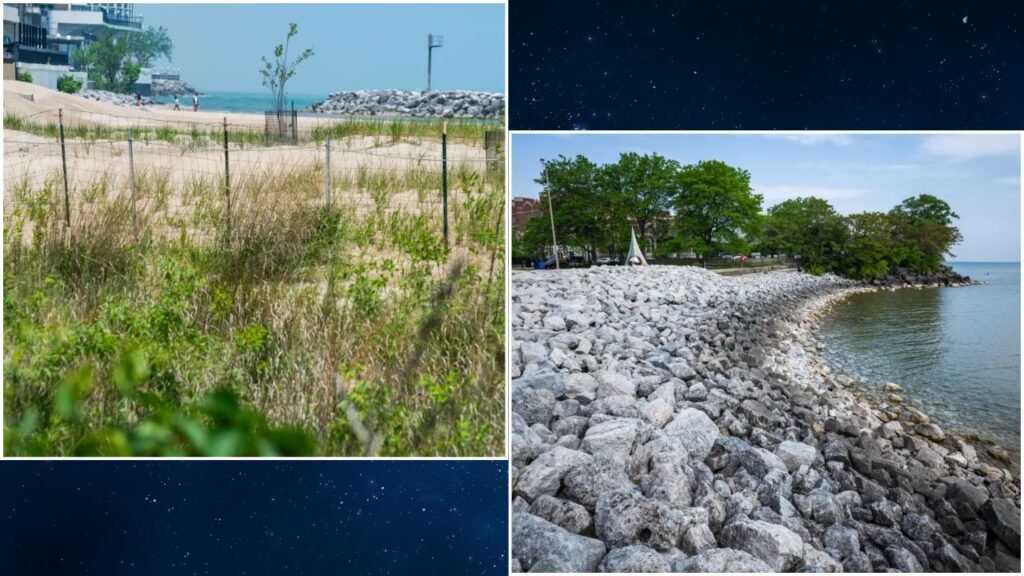
A Return to Normal — or Something More?
While the current water level is still about six inches below the long-term average since 1918, it remains two feet higher than the record low set in 2013. Experts say the recent drop doesn’t yet appear to break any records, but the long-term trend is being closely monitored.
“It’s still within what we would expect to be normal,” said Megan Royal of the U.S. Army Corps of Engineers. “We’re not breaking any new records this year.”
Still, the visible transformation of the lakefront — more sand, less flooding, and newly accessible paths — is having a major impact on how Chicagoans experience their beaches this summer.
What do you think about Lake Michigan’s changing shoreline? Have you seen new paths or erosion where you live? Share your photos and thoughts with us at ChicagoSuburbanFamily.com.

